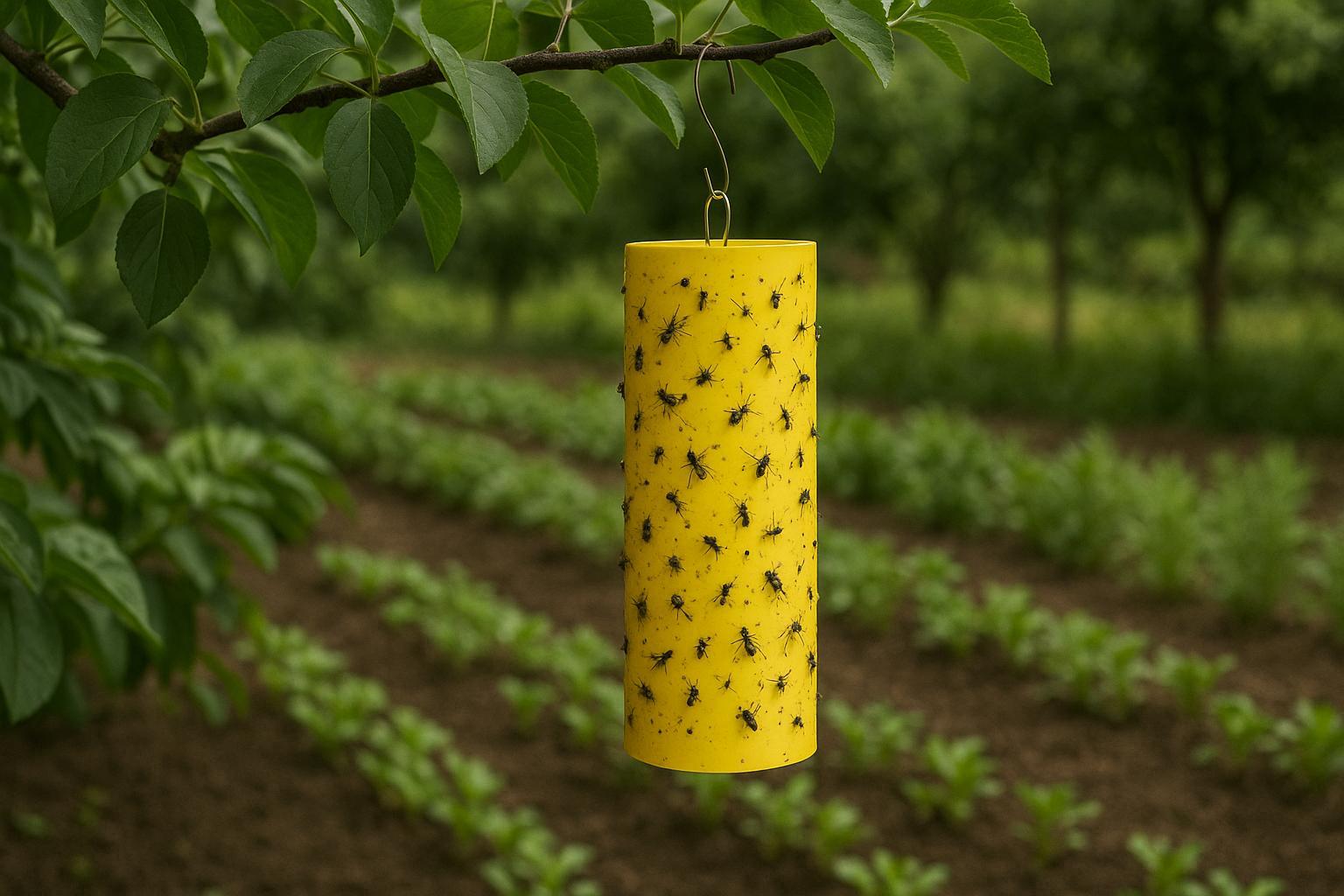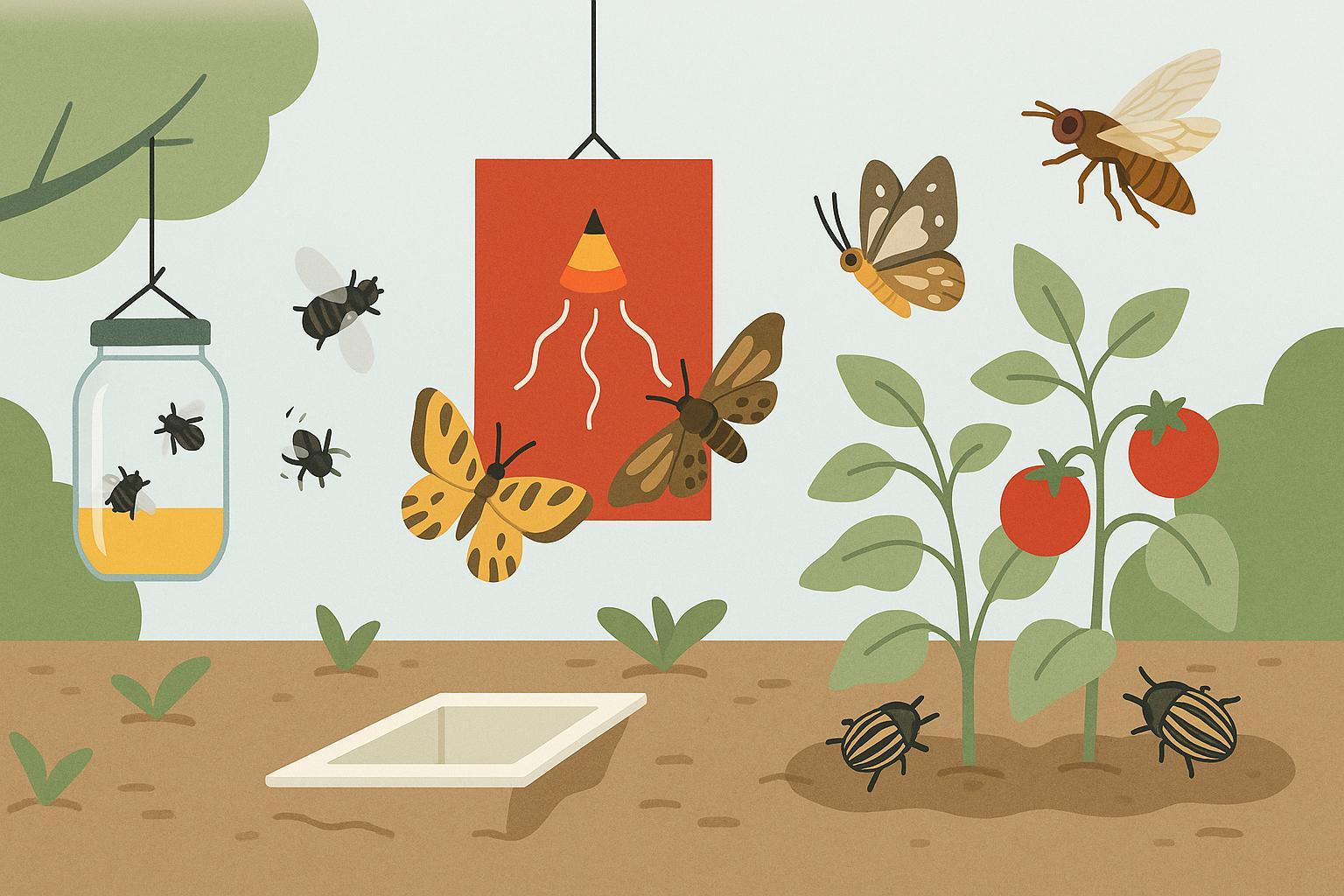How One Sticky Trap Stopped Whiteflies from Destroying My Tomatoes

Tomatoes are the pride of many gardens, often the centerpiece of backyard plots and balcony containers. Their rich flavor, bright color, and culinary versatility make them a favorite for both amateur and seasoned growers. But with great popularity comes great vulnerability. Tomatoes attract a wide range of pests, and few are as frustrating and persistent as whiteflies. These tiny, winged insects can devastate a plant in a matter of weeks, leaving leaves yellowed, fruit stunted, and gardeners discouraged.
I learnt this lesson the hard way when my thriving tomato patch began to falter. At first, I thought it was a watering issue. Then I suspected a nutrient imbalance. But the culprit revealed itself one humid morning when I shook a plant and a cloud of tiny white insects scattered like dust in the air. My battle with whiteflies had officially begun. What saved my tomatoes wasn’t expensive chemical sprays or complicated gadgets. It was a single, simple sticky trap. Here’s how it worked, why it made such a difference, and what I learned along the way.
The First Signs of Trouble in the Tomato Patch
Whiteflies are deceptively small. Measuring barely a millimetre long, they often go unnoticed until they’ve already established a population. By the time I noticed mine, leaves had developed a telltale yellow speckling, and a sticky residue coated the undersides. This substance, called honeydew, is secreted by whiteflies as they feed on plant sap. Not only does it weaken the plant, but it also promotes the growth of sooty mold, leaving the plants looking blackened and unhealthy.
The infestation felt overwhelming. Whiteflies reproduce rapidly, with females laying hundreds of eggs in their short lifespans. Within days, the problem seemed to double, and my tomato harvest hung in the balance. Traditional pesticide options didn’t appeal to me, as I didn’t want to contaminate food crops or harm beneficial insects. I needed a solution that was safe, simple, and effective.
Discovering the Power of Sticky Traps
I discovered sticky traps while investigating natural pest control techniques. These traps take advantage of the whiteflies' preference for colour by using bright yellow cards that have been coated with adhesive. Whiteflies flock to the traps like moths to a flame, become trapped, and are unable to reproduce or disperse.
I didn't have high expectations when I set the first trap among my tomato plants. However, dozens of whiteflies were rendered immobile in a matter of hours. The figures had sharply dropped by the conclusion of the week. I was shocked by how easy the solution was, yet the outcomes were quite clear.
Appropriate placement is a key component of their success. It is necessary to place sticky traps near the infected plants, preferably at canopy level. Better coverage is ensured by regularly moving them. I discovered that setting up several traps early in the season is frequently preferable to responding late when populations spike in order to keep control of future outbreaks.
I realized quickly that the key wasn’t just to Buy Sticky Traps but to understand how to use them as part of a broader integrated pest management plan. Sticky traps alone won’t solve every pest issue, but when paired with healthy gardening practices, they are remarkably effective.
Why Whiteflies Are So Damaging to Tomatoes
I became more aware of the significance of taking immediate action after learning why whiteflies pose such a major threat. By puncturing plant tissues and drawing nutrients out, these bugs obtain food. Over time, this weakens the plants, causing wilting, lower yields, and increased susceptibility to disease. Viruses like tomato yellow leaf curl virus, which may wipe out an entire crop, are also spread by whiteflies.
Whiteflies are challenging to manually pick or mechanically control, in contrast to larger pests like caterpillars or beetles. They are among the most damaging pests in tomato crop globally due to their high rate of reproduction and capacity to transmit viruses.
According to estimates from the Food and Agriculture Organisation, whiteflies cause billions of dollars' worth of crop damage every year. This might cost small-scale gardeners their whole yield for the season. Prevention and early intervention are therefore important.
Must Read: Glue Traps vs. Chemical Baits: What’s Safer for Farms?
What I Learned About Placement and Monitoring
Although sticky traps were very successful, I also discovered how crucial regular observation is. I could assess population trends and ascertain if the infestation was getting worse or going away by routinely examining traps.
Two critical placement lessons stood out:
-
Traps work best when placed slightly above the canopy level, where whiteflies are most active.
-
Spacing traps evenly across the garden prevents localized infestations from spreading unchecked.
This simple strategy not only reduced pest pressure but gave me a sense of control over a situation that initially felt unmanageable.
"Gardening teaches patience, persistence, and that even small tools can protect big dreams."
Complementing Sticky Traps with Other Natural Methods

My tomatoes were preserved that season by sticky traps alone, but longer-term protection was achieved by combining sticky traps with other natural methods. I added helpful insects that eat whitefly eggs and nymphs, such lacewings and ladybirds. By removing extra foliage, I also increased ventilation around my plants, which deters bugs.
Marigolds and basil were planted together to further lessen insect burden. Although no single strategy can ensure total security, these actions combined with sticky traps to build a robust ecology in my garden.
The University of California Agriculture & Natural Resources claims that integrated pest management techniques preserve or even raise crop yields while reducing pesticide use by more than 40%. My personal experience supported that study. Although sticky traps served as the primary defence, the win was sustained due to a variety of control techniques.
The Surprising Longevity of Sticky Traps
The durability of sticky traps is among their most useful advantages. A single trap can last for weeks, even in the face of wind and rain, unlike sprays that require frequent treatments. During the busiest insect season, I changed mine once a month, which was much less expensive and labor-intensive than daily treatments.
Whitefly populations were under control by midsummer, and my tomatoes started to flourish once more. The resulting harvest—big, robust fruits devoid of blemishes or damage—was proof of concept. What started as a last-ditch effort evolved into a dependable pest control method that I now employ throughout the year.
Expanding Beyond Tomatoes
I started utilising sticky traps in other areas of the yard after observing their efficacy in my tomato patch. Since peppers, eggplants, and cucumbers are also susceptible to sap-sucking insects, they also benefited. Sticky traps were crucial for monitoring fungus gnats and thrips, even in my small greenhouse.
Sticky traps are one of the most adaptable pest management methods for home gardeners since they work well with a variety of crops. When used properly, they target pests without upsetting pollinators, don't require any particular training, and don't endanger the safety of food.
FAQs
-
How do sticky traps work?
They use bright colors to attract flying insects, which then become stuck on the adhesive surface. This reduces pest populations and allows for monitoring.
-
Are sticky traps safe for food crops?
Yes, they are non-toxic and chemical-free, making them safe to use around vegetables, fruits, and herbs.
-
Do sticky traps harm beneficial insects?
If placed carefully, sticky traps primarily capture pests. Positioning them low and close to target plants reduces accidental catches of pollinators.
-
How many traps do I need for tomatoes?
A good rule is one trap per 2–3 tomato plants, adjusted based on pest severity.
-
Can sticky traps be reused?
No, once filled, they lose effectiveness. Replace them regularly for continuous control.
A Simple Tool with a Big Impact
In retrospect, I see that my gardening season took a different turn due to one sticky trap. It wasn't expensive, ostentatious, or high-tech. However, I learned a more general lesson from its efficacy: sometimes the most basic tools provide the best outcomes.
As gardeners, we frequently strive for complex answers, yet nature frequently rewards us for working more efficiently rather than more forcefully. In addition to saving my tomatoes, sticky traps served as a reminder to me that timing, observation, and modest but consistent interventions are the keys to gardening resilience.
Sticky traps will be among the first things I place out in my tomato patch next season—not as a last resort, but as a proactive strategy. Because I'll be prepared and my tomatoes will have a chance, even if whiteflies decide to come again.




